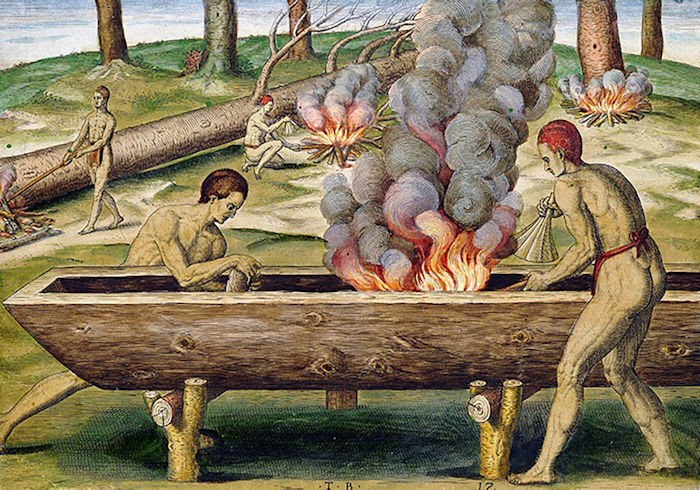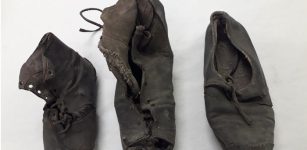First Evidence Of Canoe Burial With Remains Of A Woman Discovered In Argentinian Patagonia
Conny Waters - AncientPages.com - Canoes constructed out of a single trunk were widely used throughout the whole American continent. In many societies whose way of life centered around water, either sea or lakes, canoe burials formed part of a set of funerary customs called “water burials.”
Interestingly, archaeologists have, for the first time, discovered a canoe burial in Argentinian Patagonia. Remains of a woman who died 800 years ago were placed in a canoe that scientists unearthed at a dig site called Newen Antug, which is close to Lake Lacár in a western part of Argentina.
Detail of the disposition of the body of individual 3 and its association with remains of wood, freshwater mollusks, red pigments and painted pottery. Credit: PLOS ONE (2022). DOI: 10.1371/journal.pone.0272833
In their study published in PLOS One, the researchers explain that "canoe burials in North America present different modes, which can be divided into: A- Aquatic: 1- placing bodies in boats and then setting them adrift on the water; 2- sinking the canoe in a water body; and B- Terrestrial: 1- placing bodies in canoes exposed to the elements (including the use of platforms, posts and branches; 2- in negative graves (excavations), i.e. below ground-level; 3- in positive graves (tumuli), placing the canoe on the ground and covering it to generate prominent superficial structures.
In the southern cone of the Americas, specifically in Northwestern Patagonia (Argentina) and La Araucanía (Chile), the historical, ethnographic and archaeological records mention all three modes of terrestrial burial. They describe the coffin-canoe being placed in trees or hung from posts, while some are covered with soil to create tumuli [3]. The earliest records suggest canoe burials in excavated graves in areas of social importance. Based on a reinterpretation of the archaeological contexts of the Padre Las Casas and Gorbea 3 funerary sites in south central Chile, some investigators have disputed the existence of canoe burials or the appropriateness of the term."
By examining the human remains found in the canoe at Newen Antug, researchers hope to learn more about this burial practice.
A study of the woman's remains shows that she was between 17 and 25 years old at the time of her death, but the scientists could not determine the cause of death.
In the study, the researchers write, "her cranium and forearms are decorated with red colorant, and she has a pottery grave offering characteristic of the Late Pottery period. The dating of this piece to 880 years BP makes this the earliest record in Argentina of the use of Red on White Bichrome tradition pottery and of its use as a funerary element. The burial is indirect since the body and offerings lie within a wooden structure hollowed out and shaped by fire."
Mapuche burial, c. 1900 (in Chapanoff 2020: 14). The photograph shows a funeral ritual with a wampo beside the rewe. Credit: PLOS ONE (2022). DOI: 10.1371/journal.pone.0272833
The woman died around 1142 A.D. and was most likely a member of the Mapuche culture. It is safe to assume she died before the arrival of the Spaniards. A jug had been placed near her head and she was surrounded by almost 600 pieces of charred wood from a single Chilean cedar tree.
The form and design of her coffin are those of a wampo or small canoe, or a metaphorical representation of one. Burial in a wampo was ritual a intended to allow deceased individuals to make a final journey across mystical waters to another land known as Nomelafken, where they would reside in a place known as the "destination of souls." The Mapuche people believed one must help the "dead soul’s transition or voyage down rivers and across the sea to its final abode. The Mapuche people recognize the limitations of the dead person on this water-borne voyage, and the resulting need for ornamentation, provisions and a boat."
See also: More Archaeology News
Scientists emphasize this is a rare archaeological discovery and the deceased woman's position suggests she was put in the canoe that was used like a coffin before being placed in a grave.
Written by Conny Waters - AncientPages.com Staff Writer






















